Whether the government sanctioned energy price rises are driven by European politics, genuine environmental concern or just plain profiteering is open to question. The impact, however, on the financial viability of industry is clear; costs are rising and changes will have to be made in order to remain competitive.
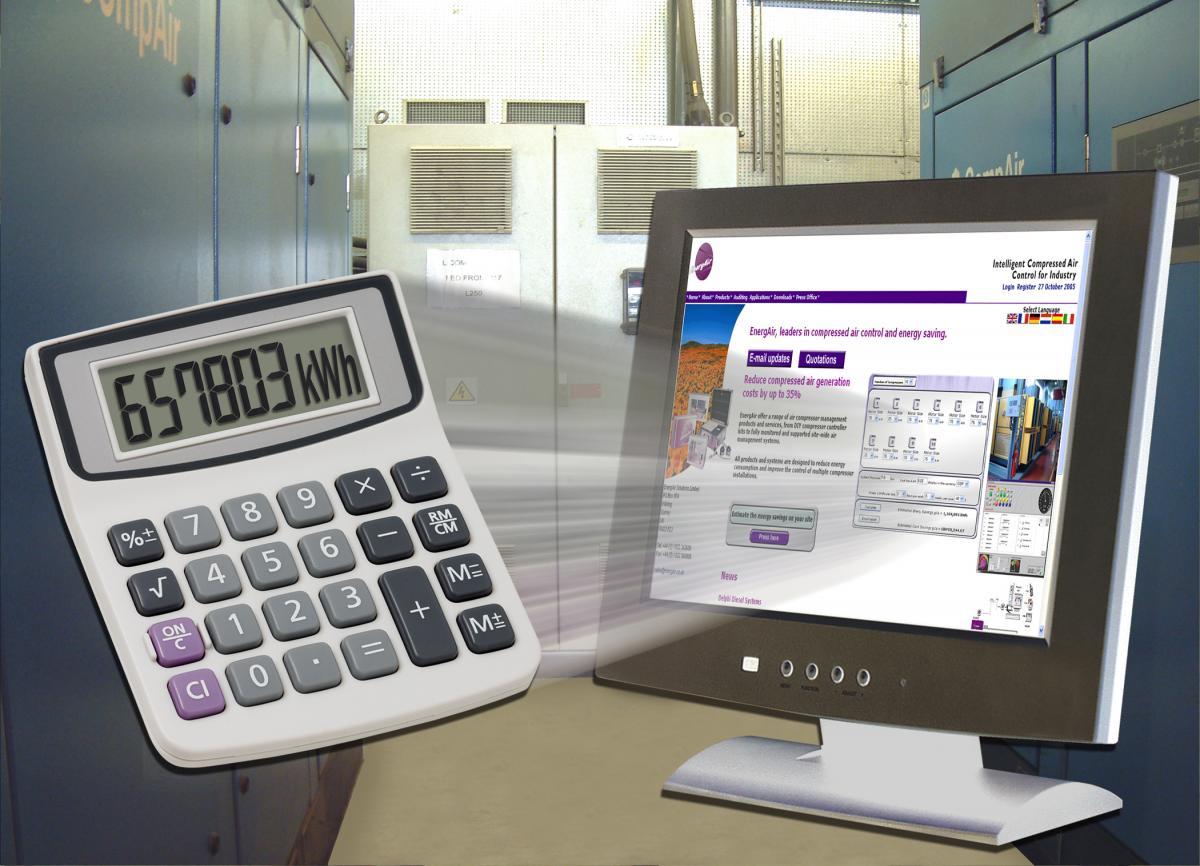 Most plant personnel with responsibility for improving plant efficiency will know that compressed air is one of the areas where savings can be made, but making changes is not always an easy or comfortable process. According to Peter Tomlins, a compressor control specialist at EnergAir, it is essential that people in this position challenge convention in order to make the right decisions and ensure that potential savings are actually realised. “First there are the old conventions. The majority of compressor houses still employ fixed speed compressors and a cascaded pressure switch control system. This arrangement will be familiar to many, but it is outdated and inefficient, and needs to be changed. There is a comfort factor with familiar technology, which is exacerbated by constant time pressure due to other day-today responsibilities and a lack of information and good advice on what can be achieved.”
Most plant personnel with responsibility for improving plant efficiency will know that compressed air is one of the areas where savings can be made, but making changes is not always an easy or comfortable process. According to Peter Tomlins, a compressor control specialist at EnergAir, it is essential that people in this position challenge convention in order to make the right decisions and ensure that potential savings are actually realised. “First there are the old conventions. The majority of compressor houses still employ fixed speed compressors and a cascaded pressure switch control system. This arrangement will be familiar to many, but it is outdated and inefficient, and needs to be changed. There is a comfort factor with familiar technology, which is exacerbated by constant time pressure due to other day-today responsibilities and a lack of information and good advice on what can be achieved.”
Mr. Tomlins continued, “Secondly there are new conventions forming that are little better, and can be misleading. Operators are receiving mixed messages from the compressor manufacturers themselves, while most branded air compressors are good machines, an incorrectly sized new compressor can have a negative effect on overall system efficiency.
 The current trend towards buying variable speed drive (VSD) compressors does offer the potential to generate compressed air more efficiently, but a VSD compressor that is not controlled as part of a coherent compressor management system that can optimize it’s use alongside other compressors in a system is unlikely to deliver any energy savings whatsoever, or worse still, could contribute to a deterioration in overall system efficiency.”
The current trend towards buying variable speed drive (VSD) compressors does offer the potential to generate compressed air more efficiently, but a VSD compressor that is not controlled as part of a coherent compressor management system that can optimize it’s use alongside other compressors in a system is unlikely to deliver any energy savings whatsoever, or worse still, could contribute to a deterioration in overall system efficiency.”
These conventions, old and new, have to be challenged if the operator is going to see real benefits. If an old cascade pressure switch control system does have to be replaced, don’t assume a new compressor will solve your problems. Where new compressors are required, pay close attention to compressor sizing and in particular to the relationship between individual compressor output and the variation this provides when taken together and compared to compressed air consumption patterns.
It is important not to assume that a VSD compressor alone will solve all your problems. The big energy saving claims of circa 30%, from some compressor vendors relate to the comparison of a single fixed-speed compressor with a single VSD equivalent. This may not apply to how this compressor will perform in a multi compressor house environment. It has to be integrated with existing compressors under some form of management control in order to deliver significant savings.
If you have enough compressors already, consider retrofitting a VSD to an existing compressor rather than making another compressor purchase. A retrofit VSD, from a specialist such as EnergAir, will be cheaper to buy, cheaper to install and make better use of the existing equipment.
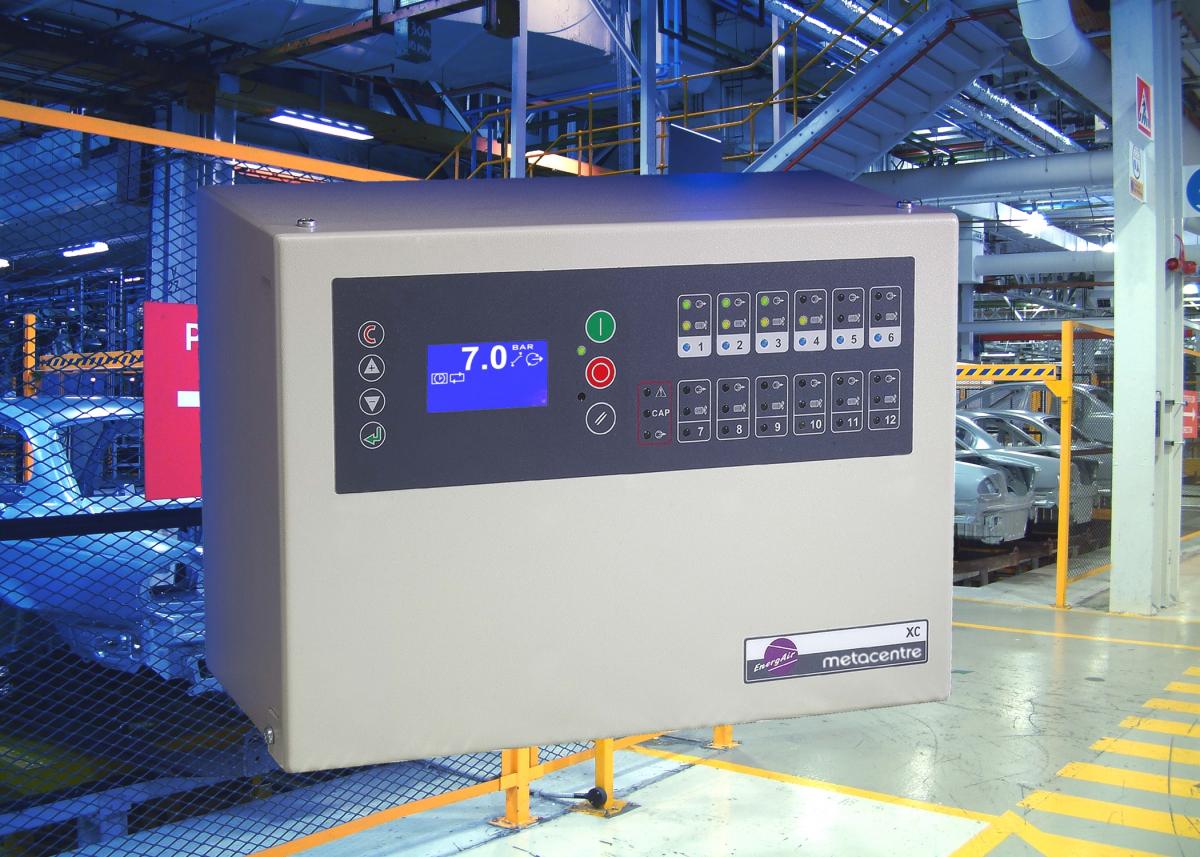 Peter Tomlins adds, “When selecting VSD compressors, users should pay close attention to its minimum speed as well as maximum speed. Its output span, efficiency across its output span and the inverter reaction time are also considerations. EnergAir sees a lot of examples of VSD compressors with relatively slow reaction times. The result is a compressor that’s simply incapable of reacting effectively to fluctuations in demand patterns.
Peter Tomlins adds, “When selecting VSD compressors, users should pay close attention to its minimum speed as well as maximum speed. Its output span, efficiency across its output span and the inverter reaction time are also considerations. EnergAir sees a lot of examples of VSD compressors with relatively slow reaction times. The result is a compressor that’s simply incapable of reacting effectively to fluctuations in demand patterns.
Other conventions about sizing compressors can also have a big impact on system efficiency. Air demand tends to be erratic. If you follow shift patterns and in some cases even seasonal trends, we’ve seen literally hundreds of sites where the demand for compressed air often falls in between the generating capacity of available compressors. This leads to increases in ‘off load’ running in the case of fixed speed compressors, which is inefficient, and where VSD compressors are installed hunting or ‘dead banding’ can occur.
Example 1 is a typical compressor system of 3 equally sized compressors. A conventional lead, top up and standby compressor arrangement and in recent times, one of the compressors is likely to be a VSD compressor. Conventional thinking is that the VSD compressor will satisfy primary demand. When demand increases above one compressor, a fixed speed compressor is loaded. The VSD compressor reacts accordingly by reducing its output to satisfy demand above that which the fixed speed compressor is now delivering. However, if demand for compressed air falls between 100% and 150%, then ‘deadbanding’ will occur where the VSD compressor cannot regulate down to a speed proportional to demand. Further to that, what intelligence is going to make the decision about which compressor to run and when?

Old conventions are to choose multiple compressors of the same size in a compressor house. New convention is to choose machines of the same size and make one a VSD compressor. To Challenge convention would be to consider Example 2. Here, instead of three equally sized compressors, a fourth smaller compressor has been added. Like new convention, one of the three equally sized compressors is a VSD. However, note how dead-banding has all but been eliminated through the introduction of an alternative size of compressor. Here supply and demand can be satisfied across the entire demand spectrum. Orchestrating it would be Management Technology such as that offered by EnergAir.
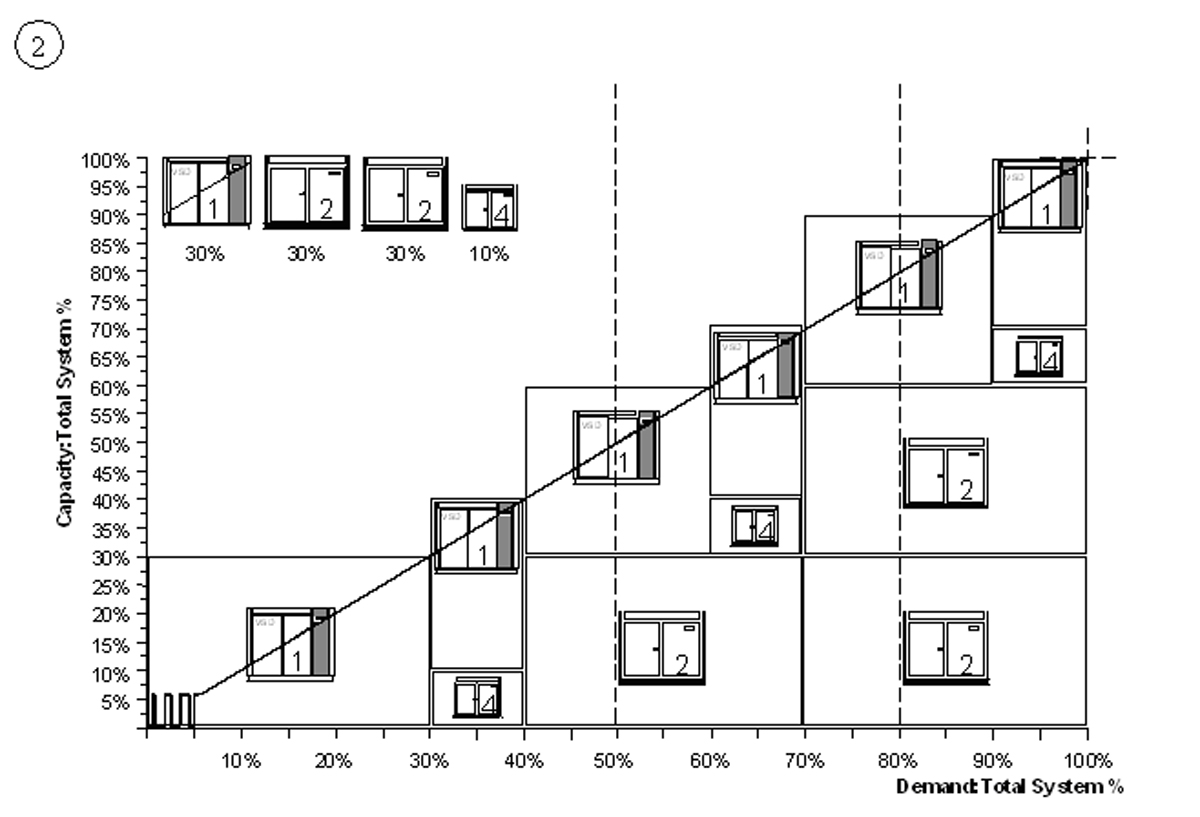
Conclusion
Rising costs are providing the stimulus to change, and so EnergAir believes that challenging convention should take the form of asking questions about plant equipment and of suppliers: Has the demand profile been mapped? Are the compressors on the site the right combination of sizes? Has energy use been recorded and benchmarked so that the impact of any changes made can be validated? Are multiple compressors being controlled by an effective management system? Is a new VSD compressor the right solution, and can it’s capability for energy savings actually be realized? Finding answers to these questions will involve challenging convention, but it should ensure that the available savings for compressed air generation are actually realized.
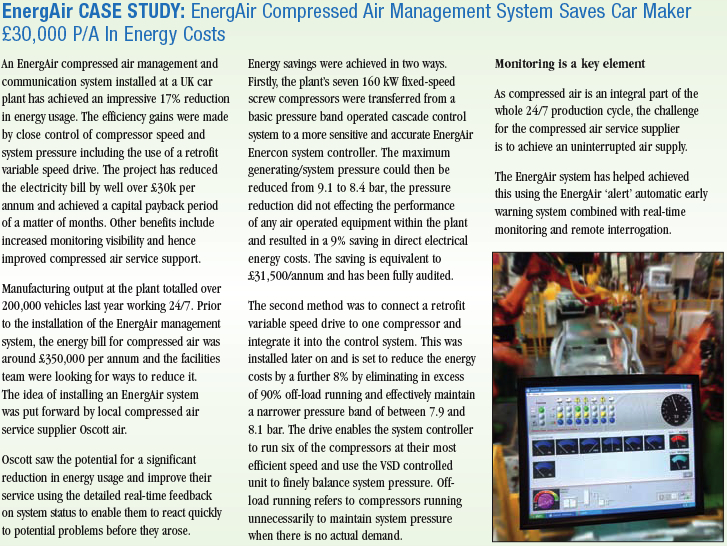


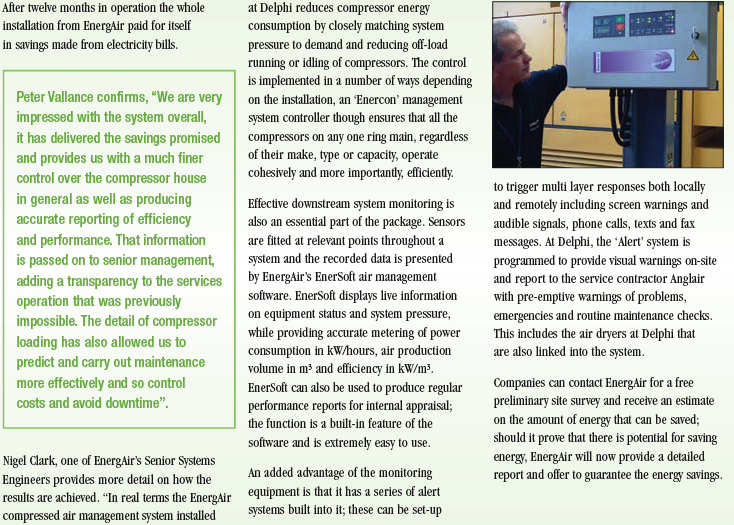
For more information please contact Nicolas De Deken, or visit www.energair.com.




